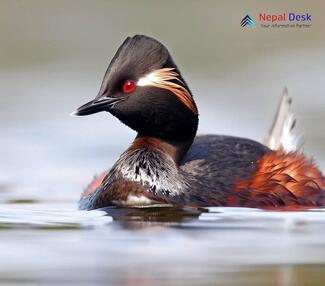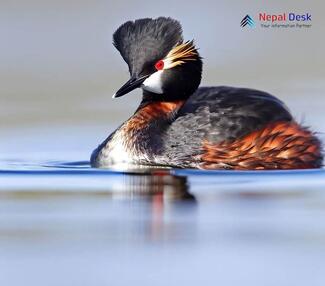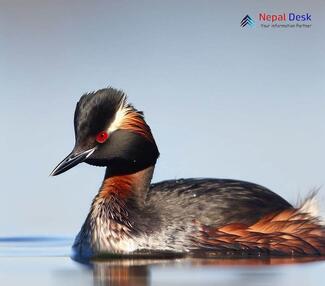It’s hard not to be captivated by the beauty and allure of the Black-necked Grebe (Podiceps nigricollis), a stunning waterbird that makes Nepal its home. This grebe species, known for its mesmerizing plumage and intriguing behavior, has been capturing the hearts of bird enthusiasts and naturalists alike. In this article, we will provide an in-depth profile of this fascinating bird, exploring its habitat, appearance, and behavior, as well as its significance in Nepal's rich biodiversity.
Habitat and Distribution
The Black-necked Grebe is primarily a freshwater bird, commonly found on shallow lakes, ponds, and marshes. They are often attracted to areas with abundant aquatic vegetation, providing them with both shelter and food sources. Although it breeds across parts of Europe and Asia, it has also been recorded in Nepal's wetlands. During migration and wintering periods, they can be spotted along the coastlines or even in brackish waters.
Appearance
The striking appearance of the Black-necked Grebe sets it apart from other waterbirds. In breeding plumage, it boasts a rich black neck and head topped with golden ear tufts or "horns," contrasting sharply against its white cheeks and red eyes. Its back is darkened, while the underside has a distinct silvery-white hue. During non-breeding seasons or in juvenile stages, they sport a more muted plumage with a predominantly gray body.
Behavior and Diet
As diving birds, Black-necked Grebes are highly skilled swimmers who can effortlessly disappear under the water's surface in search of prey. Primarily insectivorous, they feed on aquatic insects such as water beetles and larvae. However, their diet may also include small crustaceans or mollusks. Social by nature, these grebes can often be spotted in small flocks, participating in synchronized diving activities and preening rituals.
Conservation Status
Although the Black-necked Grebe is presently classified as "Least Concern" by the IUCN Red List of Threatened Species, there have been reports of population decline in certain regions due to habitat destruction, pollution, and disturbance from human activities. As such, it is crucial to proactively protect and restore their natural habitats to ensure their continued survival.
In conclusion, the Black-necked Grebe (Podiceps nigricollis) is a truly captivating species that add to the vibrancy of Nepal's diverse avian landscape. As nature enthusiasts and bird watchers, we must not only cherish its beauty but also advocate for its conservation and preservation. By raising awareness of this bewitching waterbird, we contribute to safeguarding Nepal's magnificent natural heritage for generations to come.




